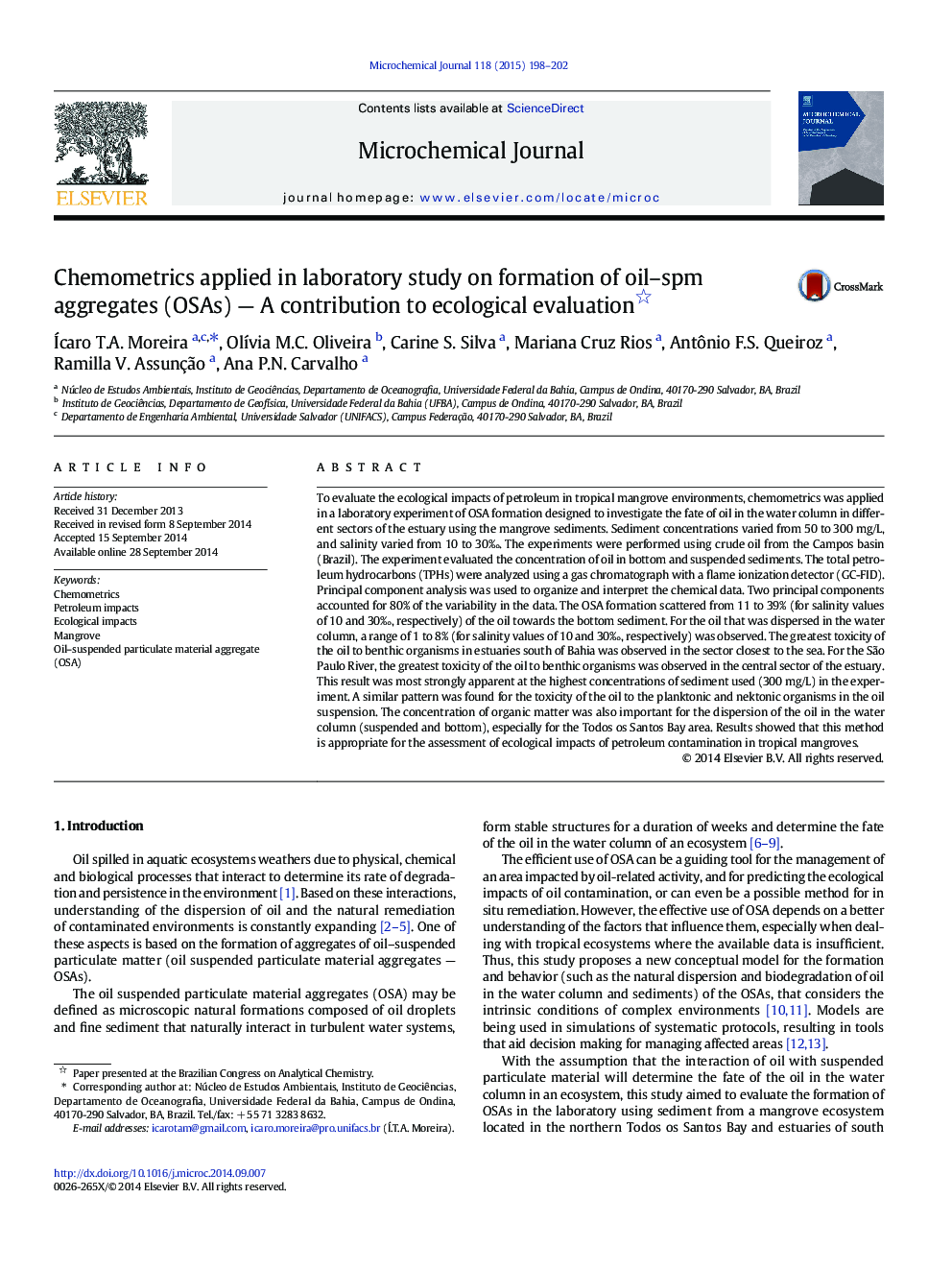| Article ID | Journal | Published Year | Pages | File Type |
|---|---|---|---|---|
| 7642854 | Microchemical Journal | 2015 | 5 Pages |
Abstract
To evaluate the ecological impacts of petroleum in tropical mangrove environments, chemometrics was applied in a laboratory experiment of OSA formation designed to investigate the fate of oil in the water column in different sectors of the estuary using the mangrove sediments. Sediment concentrations varied from 50 to 300 mg/L, and salinity varied from 10 to 30â°. The experiments were performed using crude oil from the Campos basin (Brazil). The experiment evaluated the concentration of oil in bottom and suspended sediments. The total petroleum hydrocarbons (TPHs) were analyzed using a gas chromatograph with a flame ionization detector (GC-FID). Principal component analysis was used to organize and interpret the chemical data. Two principal components accounted for 80% of the variability in the data. The OSA formation scattered from 11 to 39% (for salinity values of 10 and 30â°, respectively) of the oil towards the bottom sediment. For the oil that was dispersed in the water column, a range of 1 to 8% (for salinity values of 10 and 30â°, respectively) was observed. The greatest toxicity of the oil to benthic organisms in estuaries south of Bahia was observed in the sector closest to the sea. For the São Paulo River, the greatest toxicity of the oil to benthic organisms was observed in the central sector of the estuary. This result was most strongly apparent at the highest concentrations of sediment used (300 mg/L) in the experiment. A similar pattern was found for the toxicity of the oil to the planktonic and nektonic organisms in the oil suspension. The concentration of organic matter was also important for the dispersion of the oil in the water column (suspended and bottom), especially for the Todos os Santos Bay area. Results showed that this method is appropriate for the assessment of ecological impacts of petroleum contamination in tropical mangroves.
Related Topics
Physical Sciences and Engineering
Chemistry
Analytical Chemistry
Authors
Ícaro T.A. Moreira, OlÃvia M.C. Oliveira, Carine S. Silva, Mariana Cruz Rios, Antônio F.S. Queiroz, Ramilla V. Assunção, Ana P.N. Carvalho,
